32 Gun Museums & Collections in the USA
First version was published in
Blue Book of Antique American Firearms and Values (2016)
Blue Book of Antique American Firearms and Values (2016)
Visiting firearm museums is an essential aspect of gun appreciation and collecting. It complements the attending of gun shows and building a library of books on firearms and ammunition. In a museum, the novice and expert alike will see their own interests set in context with storied firearms of great quality, alongside guns that may be unfamiliar to them. A public gun museum or collection can often be visited within a few hours of any location in the US. Some of the great collections are grouped together in a region that justifies a trip away from home.
It would come as no surprise that the United States has the some of the world’s best gun collections scattered across the country. There are a good thirty national, state and publically owned collections in addition to those collections on military bases. There are hundreds more that are privately owned. Paradoxically, American firearm museums have a quiet presence in large cities: America’s National Firearms Collection of the Smithsonian Museum is stored away from public view in the Gun Room of the National Museum of American History on the National Mall. For gun aficionados, they are tantalized with the knowledge that the National Firearms Collection in Washington has over seven thousand firearms in storage of the highest quality and history, but only one hundred and fifty guns are on public display. New York’s urbane Metropolitan Museum of Art does much better with its epicurean collection. In the Los Angeles area, you have to drive to the outer limits to see nineteenth century guns used in the West in the Autry National Center. The Art Institute of Chicago shows a connoisseur’s collection early guns. For all its braggadocio, there is still nothing of note in the cities of Texas except Collectors Firearms Inc., a remarkable gunstore in Houston. To all intents and purposes, Collectors is a ‘museum’ of antique firearms - where you can touch and buy almost anything!
Firearm museums & collections are generally divided into four types.
1) Large and encyclopedic ‘catalog’ collections of sporting and military firearms.
2) Factory prototype, skeletonized and design reference collections.
3) Firearms displayed in context with other artifacts of the same historical period.
4) Decorated presentation firearms, dwelling on artistry, aesthetics and history.
1) Large and encyclopedic ‘catalog’ collections of sporting and military firearms.
2) Factory prototype, skeletonized and design reference collections.
3) Firearms displayed in context with other artifacts of the same historical period.
4) Decorated presentation firearms, dwelling on artistry, aesthetics and history.
Some museums are lucky enough to have more than one type of collection. Private collections are structured similarly, which is not surprising as some great private collections become the basis for public museum collections at a later date. Private collections are unlikely to be annotated with wall labels, as the living collector provides commentary in person, adjusting the focus depending upon the knowledge of the visitor.
Two of the nation’s largest firearm collections choose not to show in a dedicated gallery, but lend guns out as supporting artifacts for exhibitions of general interest. Five museums are founded upon a reference collection bequeathed to them from a gun factory. In order to visit the large gun collections, the traveler has to leave the big American cities and venture out to suburbia, regional cities, military bases and the countryside, where they will not be disappointed.
The mission of firearm museums is often related to the era of their birth. The nineteenth century saw the establishment of military collections made public for the first time. At the start of the twentieth century, until just after World War I, great collections of early European and Asian firearms were acquired by the major American art museums. Once the national collections were set in place and World War II had been won in 1945, corporate and substantive private collections were turned into museums and opened to the public. From the late 1950s, the collections of some major firearm manufacturers, including Colt, Smith & Wesson, Winchester, Remington and Browning, became the foundation collections for other museums. Currently, there is a new cycle of legacy museums, built up from several troves of late twentieth century collectors.
The above groupings of collections are mostly located geographically, related to the time of their establishment. Generally, the pre-nineteenth century collections of European firearms are located in the Eastern cities of New York, Philadelphia, Washington and Boston, as well as Chicago. The birthplace of America’s gun industry, the Connecticut River Valley, has six collections related to the manufacturers, who located on that river for its water power. The Washington D.C. area has four national collections of great gravitas, appropriate to the Nation’s capital, yet only one can be visited. Another will open in 2019. Both Pennsylvania and Kentucky have museums dedicated to the hand-made rifles that take the names of those states. The Mississippi River is an important marker, as it was the starting post of nineteenth century Western expansionism. St. Louis was an significant gun town where the Hawkin Bros. and Browning had manufactories, yet St. Louis does not have a firearm museum. Four hours to the north is the Rock Island Arsenal, built on an island in the Mississippi River. Three hours’ drive southwest, in Springfield, MO, is the NRA Bass Pro Museum. Further south, in Oklahoma, is the ‘Bermuda Triangle’ of gun museums, with four outstanding collections located relatively close together. They are themed on hunting, western expansion, the U.S. Army wars against indigenous Americans, and of general interest. Further west, the museums become solitary outposts, on both sides of the Rockies. New Mexico has the NRA Brownell Museum, Utah has the John Moses Browning Museum and Wyoming is home to the Cody Firearms Museum. Fittingly, the trail ends in Los Angeles at the Autry Museum, with its close links to Hollywood.
There is no doubt that new firearm museums will grow from the great collections of private owners, as they seek a cenotaph to their interests. As the nation grapples with the increasing use of guns in the big cities, it would be a prudent move for America to take a page from the British and French and implant firearms museums squarely in cosmopolitan centers, but curated towards new audiences. In that way, citizens can be better informed about a subject that they are understandably wary of.
What follows is an outline of thirty-two firearm museums and collections from around the United States. It does not pretend to be complete, and only three of the hundred and five museums in the U.S. Army Museum System are included. Also, none of the museums of the U.S. Marine Corps are in the guide. The museums listed below are public institutions yet, paradoxically, in some cases, not many of the guns they have are on display. Almost every museum has much of its collection in storage and access is given only to dignitaries and scholars with good cause.
For each museum, the guide records the number of guns in the collection and currently on exhibit, and notes the percentage of the whole collection on display. Online catalogs of America’s gun museums do exist, notably from the American Society of Arms Collectors and the U.S. Army, but they are not annotated. The trade journal, The Official Museum Directory, dedicates a section to Gun Museums, and it is also not annotated. A version of this guide is included in the Blue Book of Antique American Firearms and Values (2016).
http://americansocietyofarmscollectors.org/resources/arms-museums/
http://www.history.army.mil/museums/directory.html
http://officialmuseumsdirectory.com
http://americansocietyofarmscollectors.org/resources/arms-museums/
http://www.history.army.mil/museums/directory.html
http://officialmuseumsdirectory.com
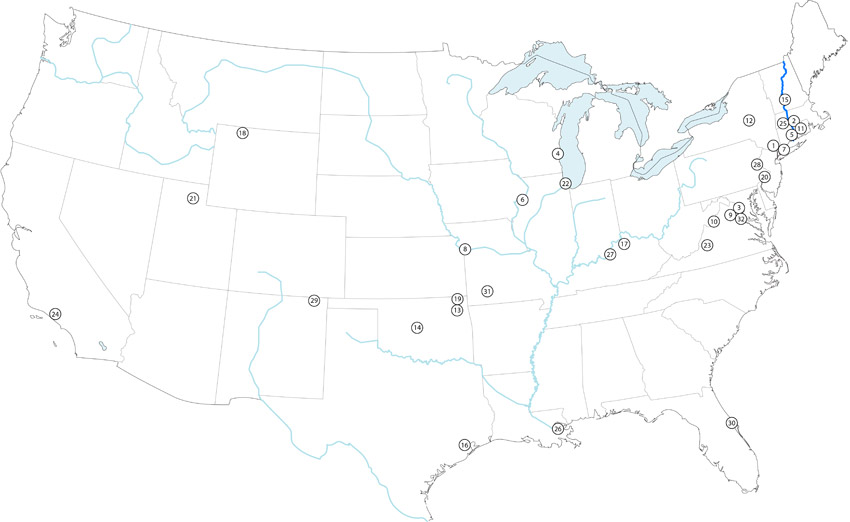
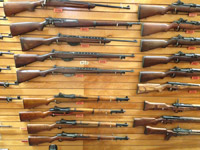
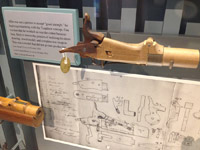
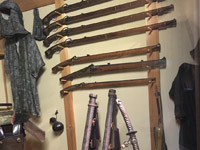
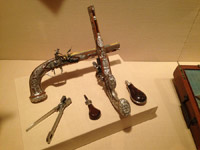
 1. West Point Museum
1. West Point Museum 2. Springfield Armory
2. Springfield Armory 3. Smithsonian Museum
3. Smithsonian Museum 4. Nunnemacher Milwaukee
4. Nunnemacher Milwaukee 5. Wadsworth Atheneum
5. Wadsworth Atheneum 6. Rock Island Arsenal
6. Rock Island Arsenal 7. Metropolitan Museum NY
7. Metropolitan Museum NY 8. National World War I
8. National World War I 9. FBI Reference Collection
9. FBI Reference Collection 10. NRA National Firearms
10. NRA National Firearms 11. Connecticut History
11. Connecticut History 12. Remington Firearms
12. Remington Firearms 13. Davis Arms Museum
13. Davis Arms Museum 14. National Cowboy Mus.
14. National Cowboy Mus. 15. American Precision
15. American Precision 16. Collectors Firearms
16. Collectors Firearms 17. KY Military History
17. KY Military History 18. Cody Firearms Museum
18. Cody Firearms Museum 19. Woolaroc Museum
19. Woolaroc Museum 20. Kienbusch Philadelphia
20. Kienbusch Philadelphia 21. John Browning Museum
21. John Browning Museum 22. Art Institute Chicago
22. Art Institute Chicago 23. Henry Stewart VMI
23. Henry Stewart VMI 24. Autry Museum
24. Autry Museum 25. Wood Museum S&W
25. Wood Museum S&W 26. National WWII Museum
26. National WWII Museum 27. Frazier History Museum
27. Frazier History Museum 28. Pennsylvania Longrifle
28. Pennsylvania Longrifle 29. Frank Brownell Museum
29. Frank Brownell Museum 30. Inst. Mil. Technology
30. Inst. Mil. Technology 31. NRA Bass Pro Sporting
31. NRA Bass Pro Sporting 32. U S Army Museum
32. U S Army Museum